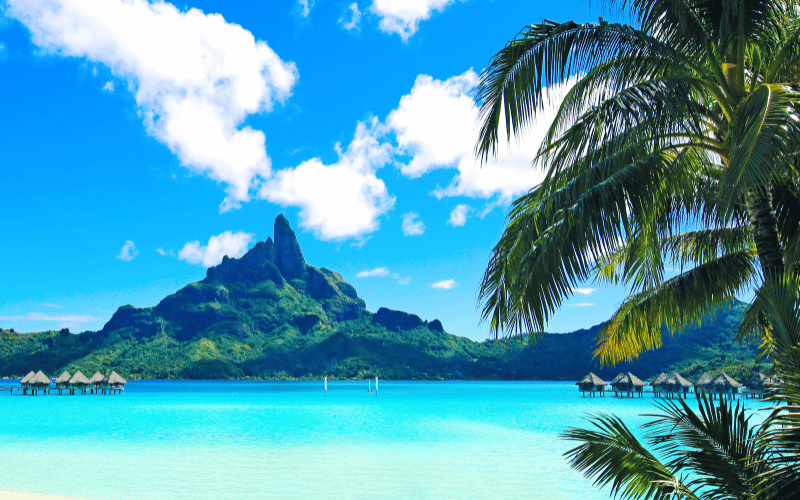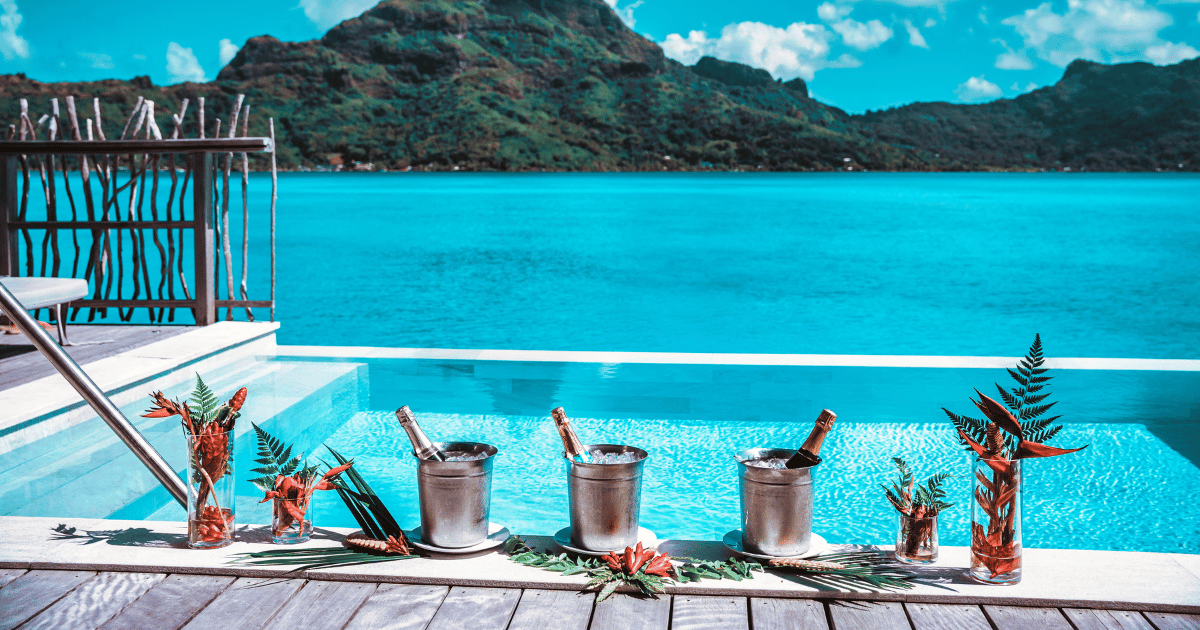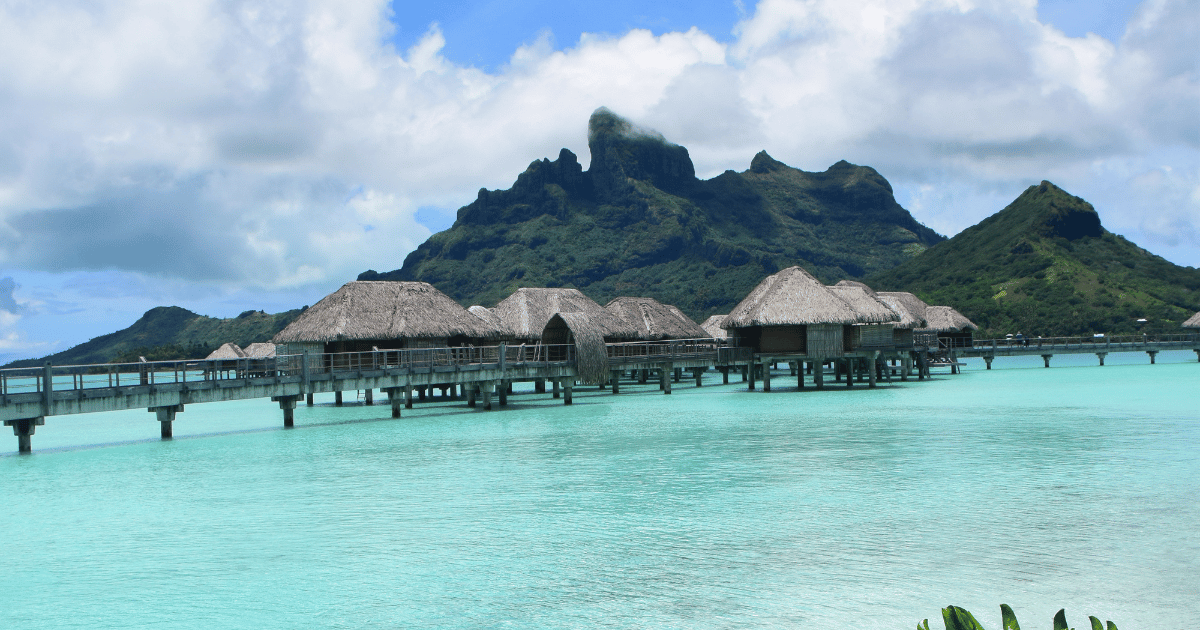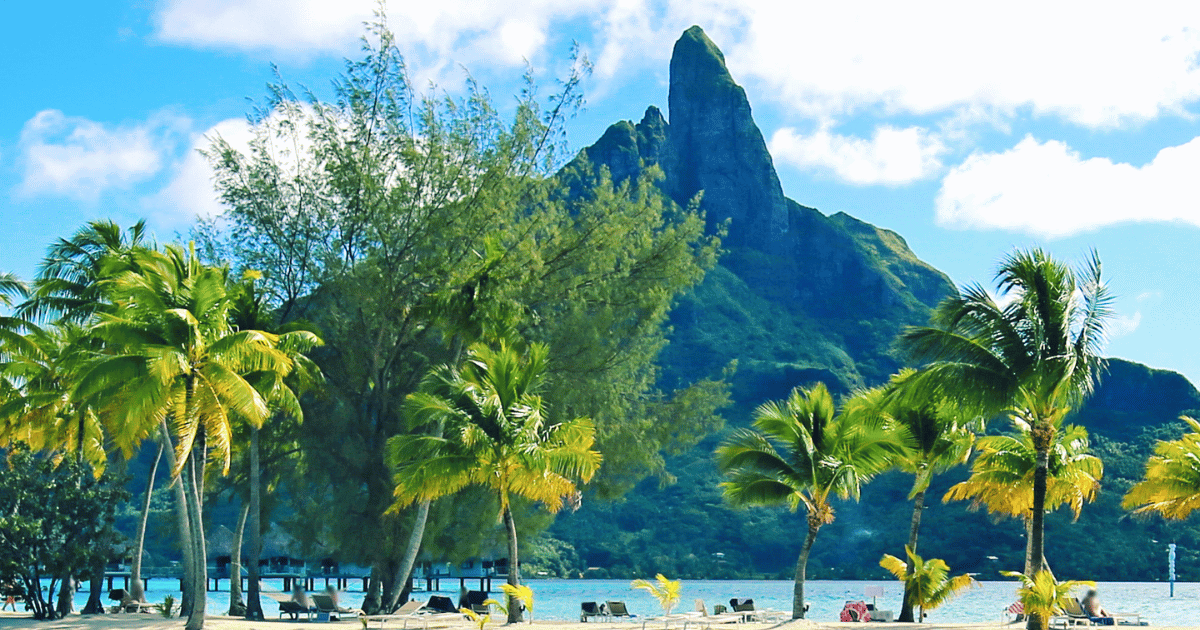
BORA BORA
Join us in experiencing the magic of Bora Bora! This blog is a celebration of this island’s stunning beach destinations, offering immersion in its famous turquoise pools and soft white sands. Discover the best snorkeling spots, luxurious beach resorts, and essential tips for an ideal day on the beach in Bora Bora. We share our passion and knowledge of the island’s natural beauty and how to experience it to the fullest.
Check Bora Bora GuidesQuick Facts About Bora Bora
| CATEGORY | FACTS |
|---|---|
| Location | South Pacific Ocean, part of French Polynesia |
| Borders | None (Island) |
| Climate | Tropical, warm year-round with a wet season |
| Population | Approximately 10,000 (2023) |
| Official Language | French, Tahitian |
| Currency | CFP Franc (XPF) |
| Capital | No official capital; the main village is Vaitape |
| Major Industries | Tourism, pearl farming, fishing |
| Religion | Predominantly Christianity |
| Time Zone | GMT-10 (Tahiti Time) |
| National Symbols | The hibiscus flower, the coconut tree |
Geography and Environment

Major Physical Features
Bora Bora is a small island formed from an extinct volcano. It’s surrounded by a lagoon and a barrier reef. The island is part of the Society Islands in French Polynesia. It’s known for its turquoise waters and white sandy beaches. Mount Otemanu is the highest point, offering incredible views. Coral reefs around the island are home to a wide range of marine life. They protect the island from waves and support local fishing. The motus, or small islets around Bora Bora, are popular for luxury resorts and private beaches.
Seasonal Variations
Bora Bora enjoys a tropical climate year-round, with temperatures typically between 24°C and 30°C (75°F to 86°F). There are two main seasons. The dry season lasts from May to October. It’s cooler, less humid, and sees less rainfall. This period is the peak tourist season because of the pleasant weather. The wet season runs from November to April. It’s warmer and more humid, with frequent rain showers. During this time, fewer tourists visit, and there’s a higher chance of tropical storms.
Natural Resources
Bora Bora’s primary natural resource is its marine environment. Fishing is a key industry for locals, with the lagoons and reefs rich in fish. Black pearl farming is also significant, with Bora Bora pearls highly prized. Tourism is the backbone of the economy. The island’s natural beauty and biodiversity attract visitors from around the world.
Environmental Challenges
Bora Bora faces several environmental challenges. Rising sea temperatures threaten the coral reefs, leading to coral bleaching. This affects marine life and tourism. Rising sea levels also pose a threat, causing beach erosion and potential damage to infrastructure, like the iconic overwater bungalows. Pollution is another issue. The island struggles with waste management, especially with the influx of tourists. Efforts are ongoing to improve sustainability and reduce the environmental impact of tourism on the island.
History and Culture

Historical Background
Bora Bora has a long history. People from Polynesia settled the island over a thousand years ago, around the 4th century AD. They called it “Vava’u” and used it as a refuge due to its natural defenses. In 1722, the Dutch explorer Jakob Roggeveen was the first European to see the island, but it was Captain James Cook’s visit in 1777 that brought it to the attention of the Western world. European contact, followed by missionary work and French colonization, greatly influenced the island’s development. During World War II, the United States used Bora Bora as a military base, building the island’s first airstrip, which still functions today. The war introduced modern infrastructure and significantly impacted the local way of life.
Key Historical Events
• French Annexation (1888): In 1888, Bora Bora became part of French Polynesia as a French protectorate. This event marked the start of French influence on the island, which remains strong today.
• World War II (1942-1946): Bora Bora served as a key military base for the United States during World War II. The base brought new infrastructure and introduced the island to modern technology and goods.
• Tourism Boom (1960s-Present): Starting in the 1960s, Bora Bora began its transformation into a luxury tourism hotspot. The construction of overwater bungalows in the 1970s revolutionized tourism on the island, making it a top destination for honeymooners and travelers seeking luxury.
What Makes Bora Bora Unique
The Overwater Bungalow Experience

Origin and Innovation
Bora Bora is where the concept of overwater bungalows was born. In the 1970s, innovative hoteliers built the first bungalows on stilts above the lagoon. These unique accommodations became a symbol of luxury and helped turn Bora Bora into a top destination for travelers seeking something special. The idea was simple but revolutionary: to offer guests direct access to the water and stunning views from their rooms. Over time, these bungalows have evolved into luxurious retreats with all the modern amenities, yet they still maintain that close connection to the natural environment.
Cultural and Environmental Impact
The rise of overwater bungalows brought significant benefits to the local community, especially in terms of jobs and economic growth. However, this boom also meant the island had to balance development with the need to protect its fragile environment. Sustainable practices are crucial in maintaining these structures, ensuring that they don’t harm the delicate marine ecosystems they hover above. Many resorts have adopted eco-friendly measures, like using sustainable materials and reducing waste, to minimize their environmental footprint.
Bora Bora’s Marine Biodiversity

Unique Marine Species
Bora Bora’s waters are home to some unique marine species. From colorful coral fish to graceful manta rays, the marine life here plays a key role in the local ecosystem. The island’s clear lagoons and surrounding reefs support a rich diversity of life, making it a paradise for divers and snorkelers. These species aren’t just beautiful to look at—they are also essential to the health of the ocean, contributing to the balance of marine life worldwide.
Coral Reef Ecosystem
The coral reefs around Bora Bora are among the healthiest and most diverse in the world. These reefs are not only beautiful but also vital to the island’s marine life. Unfortunately, climate change poses a significant threat, leading to coral bleaching and other challenges. Despite these issues, there are ongoing efforts to preserve and protect these reefs. Local initiatives focus on coral restoration and promoting sustainable tourism practices to ensure that these natural treasures continue to thrive for generations to come.
Cultural Significance of Mount Otemanu

Sacred Mountain
Mount Otemanu isn’t just a stunning backdrop; it holds deep cultural and spiritual importance in Polynesian culture. Locals see it as a sacred place, rich with legends and stories passed down through generations. These tales often highlight the mountain’s mystical presence and its role in the island’s history. When you visit, you’re not just seeing a mountain; you’re connecting with a piece of the island’s soul.
Hiking and Exploration
Hiking Mount Otemanu offers more than just breathtaking views. The trails lead you through the island’s lush interior, where you can experience the natural beauty up close. Local guides often share stories and legends tied to the landscape, giving you a deeper understanding of the island’s culture as you explore. It’s an adventure that blends physical challenge with cultural discovery.
Traditional Polynesian Culture in Bora Bora
Preservation of Traditional Practices
Despite the influx of modern influences, Bora Bora has managed to hold on to its Polynesian roots. The island’s dance, music, and art are more than just performances—they’re expressions of identity. These traditions are carefully preserved and celebrated, helping to keep the island’s cultural heritage alive. When you experience these elements, you’re witnessing the heart of Bora Bora’s community.
Community Engagement
Tourists in Bora Bora have unique opportunities to engage with local communities. You can participate in traditional activities, like learning to dance the ‘ori or craft your own pareo. These experiences aren’t just for show—they offer a genuine connection to the island’s culture. The focus is on maintaining authenticity, ensuring that both locals and visitors benefit from cultural tourism.
Sustainable Tourism Initiatives
Eco-Friendly Resort Practices
Bora Bora’s resorts are leading the way in sustainable tourism. Many have implemented eco-friendly practices like solar energy use, waste reduction, and marine conservation programs. These initiatives not only reduce the environmental impact but also enhance the natural beauty that draws people to the island in the first place. By choosing to stay at these resorts, you’re supporting efforts to keep Bora Bora pristine for future generations.
Community-Led Conservation Efforts
Local communities play a key role in Bora Bora’s conservation efforts. Many initiatives are community-led, focusing on protecting marine life, restoring coral reefs, and promoting sustainable fishing practices. These projects benefit both the environment and the local economy, showing that tourism and conservation can go hand in hand.
The Romance Capital of the World
Honeymoon Destination
Bora Bora is famous as a top honeymoon destination, often called the most romantic place on earth. The island offers unique experiences for couples, from private dining on secluded motus to intimate sunset cruises. The combination of stunning scenery, luxurious accommodations, and exclusive activities makes it the perfect setting for romance.
Celebrity Influence
Bora Bora’s reputation as a luxury romantic destination has been boosted by high-profile visits from celebrities. Over the years, numerous celebrities have chosen the island for their weddings or honeymoons, further cementing its status. These visits not only enhance the island’s allure but also attract more couples looking for a slice of paradise.
Bora Bora Guides
Choose the destination you are most interested in, and you will be taken to the appropriate information and reviews. With these guides, we are confident that you have the optimal source of information to find your next dream destination.
